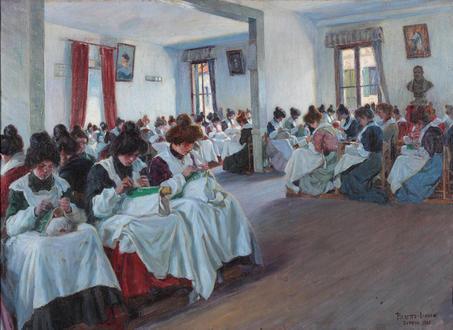In Venice's National Museum of Villa Pisani, fruit sellers, seamstresses and water-bearers cover the walls in the exhibit "The Nobility of Work: Trades and Crafts in Venitian Painting between 1800 and 1900", featuring many works available to the public for the first time.
While many museum collections concentrate on regal, biblical, mythological, or beautifully feminine subjects, "Nobility of Work" draws its inspiration from the changing role of labour and trades in Venice after the fall of the Venetian Republic. Through an almost journalistic lens, the paintings in the exhibit chronicle the period as it transpired in Venice's narrow streets and piazzas, depicting such everyday scenes as a lawyer signing papers or a gourd seller promoting their products.
Curators Myrian Zerbi and Luisa Turchi drew on the first line of the Italian Constitution, "Italy is a democratic Republic founded on labour", to explore the place and importance of labour in Venice in the period leading up to Italian unification.
Pulling pieces from public collections in the National Galleries of Modern Art in Rome, Turin, and Venice, as well as civic museums and private collections, the curators united 70 paintings with subjects of domestic help and typically lower-class professions into a comprehensive whole.
Open through the 4th of November, the exhibit is closed on Mondays and available free of charge to EU citizens under 18 and over 65. Regular tickets are 10 euros.










